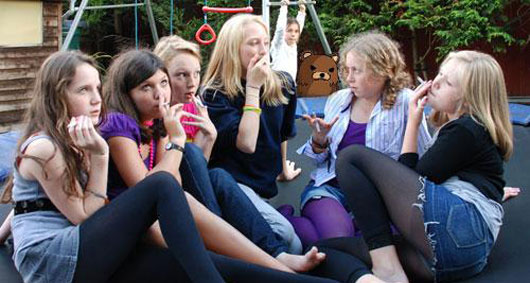
According to Wikipedia, smoking’s history dates back to as early as 5000–3000 BC, when the agricultural product began to be cultivated in Mesoamerica and South America; consumption later evolved into burning the plant substance either by accident or with the intent of exploring other means of consumption.
Cigarette-making machines were developed in the latter half of the 1800s. The first such machines produced about 200 cigarettes per minute (today’s machines produce about 9,000 per minute). Cheap mass production and the use of cigarette advertising allowed tobacco companies to expand their markets during this period.
Today there are 1.1 billion smokers in the world and 200 million more who use other tobacco products, tobacco use remains a global epidemic as nearly 5 trillion cigarettes are consumed each year.
Who is a smoker?
The World Health Organization (WHO), does not provide a definition for a smoker. Nevertheless, there exist several criteria for defining a smoker.
Any person engaged in the act of inhaling and exhaling the fumes of burning plant material whether actively or passively is considered a smoker.
Types of Smokers
There are 4 categories of smokers namely:
- Casual smokers: A casual smoker is an individual who only smokes when socializing with friends. Most casual smokers do not consider themselves smokers because they do it casually. However, you either smoke or you do not.
- Light or Moderate smokers: A moderate smoker consumes between 1-2 packets of cigarettes a day. They mostly smoke under stressful conditions. Compared to casual smokers, moderate smokers stand a better chance of quitting smoking.
- Chain or heavy smokers: To be classified as a chain or heavy smoker, you will have to consume more than three packets of cigarettes in a single day. Heavy smokers are addicted to cigarettes and they have to smoke non-stop in order to prevent withdrawal symptoms like headaches.
- Passive smokers: A passive smoker is an individual who breathes in the smoke from other people’s cigarettes, cigars, or pipes. Also known as Secondhand smoke, this type of smoking is accidental and can affect non-smokers and children. If a pregnant woman breathes in second-hand smoke, it can also affect the unborn baby.
Health Impact of Smoking
No matter how you smoke it, (casual, moderate, chain, or passive) tobacco is dangerous to your health. There are no safe substances in any tobacco products, from acetone and tar to nicotine and carbon monoxide. The substances you inhale don’t just affect your lungs. They can affect your entire body.
Smoking can lead to a variety of ongoing complications in the body, as well as long-term effects on your body systems. While smoking can increase your risk of a variety of problems over several years, some of the bodily effects are immediate. According to the CDC, cigarette smoking causes more than 480,000 deaths each year in the United States. This is nearly one in five deaths. Global progress is also threatened by growing smoking rates among children aged 13 to 15 years in many countries and by tobacco industry tactics such as targeting poorer countries with weak regulatory environments and pushing novel products in previously untapped markets.
Smoking causes cancer, heart disease, stroke, lung diseases, diabetes, and chronic obstructive pulmonary disease (COPD), which includes emphysema and chronic bronchitis. Smoking also increases the risk of tuberculosis, certain eye diseases, and problems of the immune system, including rheumatoid arthritis. Quitting smoking is one of the best things you will ever do for your health. It can affect your life in ways you may not even imagine.
Benefits to your health and life from quitting smoking include:
- Your sense of taste and smell may improve, so you may enjoy your food more.
- Exercising to increase your fitness will become easier.
- You will be free from the hassles of smoking, such as smelling smoke or always having to make sure you have enough cigarettes.
- Your fertility levels will improve (in both men and women), and if you’re a woman, your chances of having a healthy pregnancy and baby will also increase.
- You will save thousands of dollars a year that you can save or spend on other things.
- Your family and friends will also benefit because:
- You won’t put their health at risk with second-hand smoke anymore
- Your children will be less at risk from bronchitis, pneumonia, asthma, meningitis, and ear infections.
Your doctor, nurse practitioner, physician assistant, dentist or other healthcare provider are key resources for quitting. They can help you discover what medication will work best for you and put you in contact with local resources and your local quitline. Healthcare providers can help with the information and support you need to live smoke-free. They may help you craft your own quit plan, offer methods to prevent slip-ups, or walk through the pros and cons of nixing nicotine. Doctors or healthcare providers often stick with you throughout your quit journey by scheduling follow-up visits or phone calls. Remember, healthcare professionals are not there to judge—they’re there to help you in any way you need to achieve a smoke-free life. Read How Smoking Affects Your Brain





